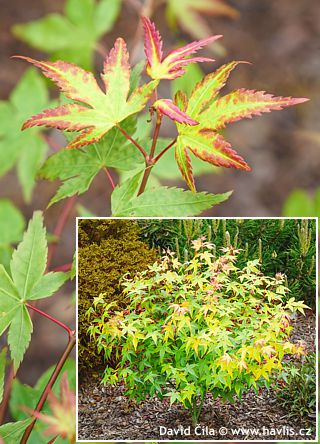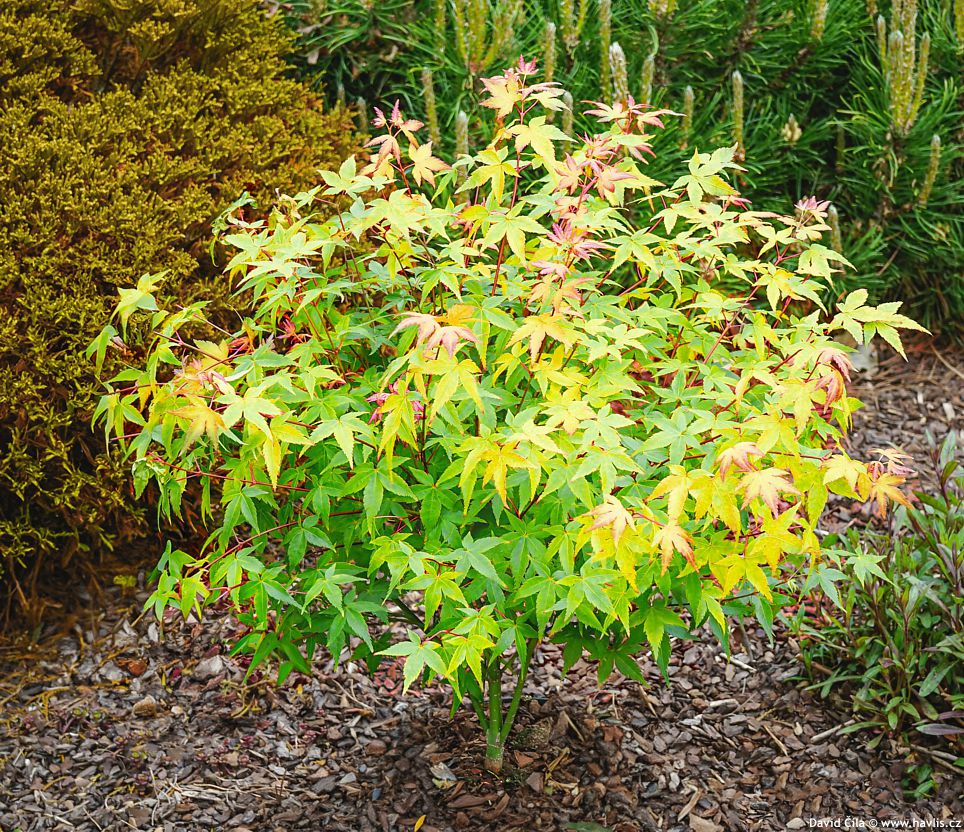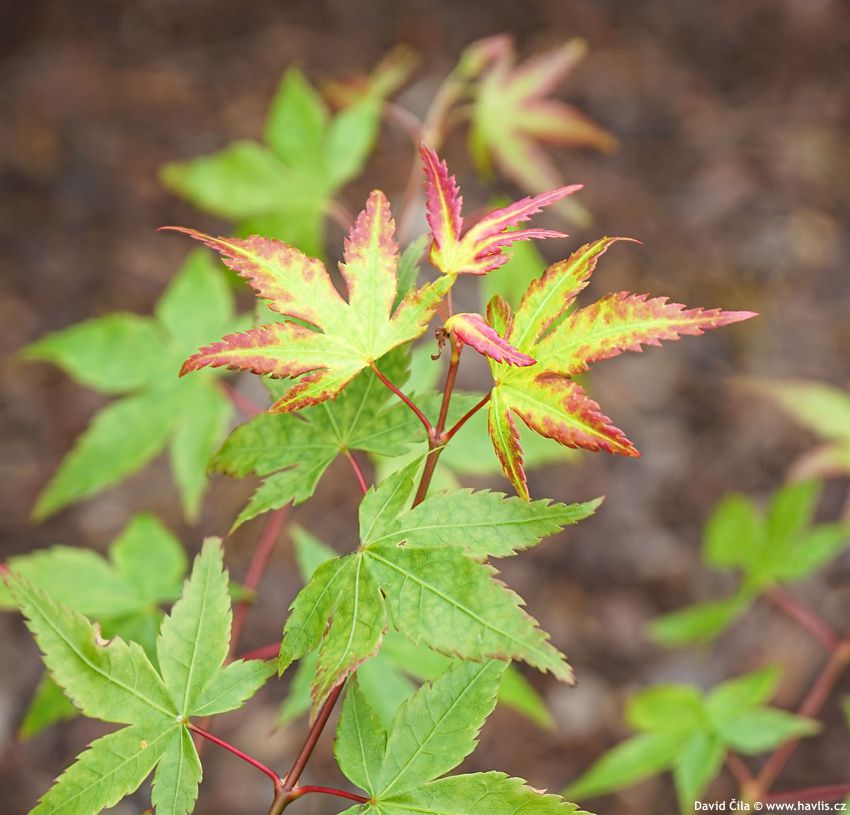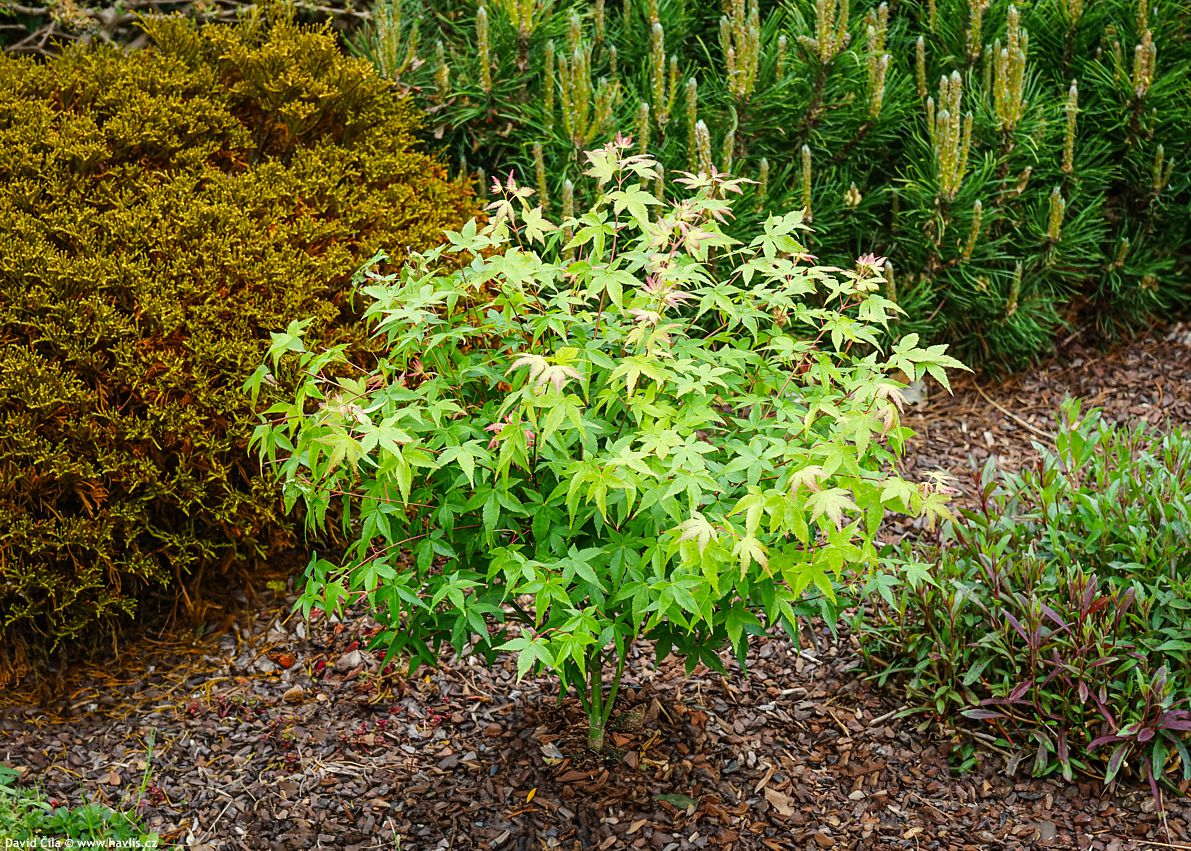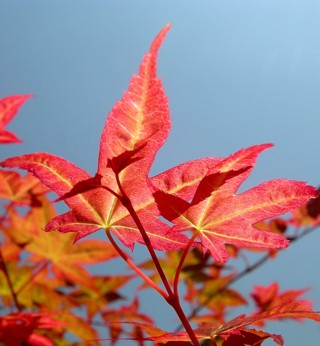Acer palmatum (syn. ‚Mapi-no-machi-hime‘) 'LITTLE PRINCESS' Japanese maple
size/type
medium-sized shrub,small shrub
usual height
0,5-1,5m
usual width
0,5-1,5m
leaves
deciduous broadleaf
colour of leaves
location
full to partial sun
soil type
acidic (peaty) to neutral
soil moisture requirements
evenly moist (dislikes drought)
USDA zone (lowest)
5 (down to -29°C)
winter protection
for zone 5+6

for zone 7

categorized
Acer
Japanese maples are very decorative and usually low shrubs, occasionally small trees, with attractive foliage and picturesque structure. There are many varieties in various shades of green, chartreuse, golden and yellow, red to maroon, and even multicoloured (variegated). They originate from Asia (Japan, China, Korea), where they have been cultivated for at least two centuries or perhaps even longer, however, they were introduced to Europe only at the beginning of the 19th century, specifically to Great Britain in 1820. Interestingly, the botanist Carl Peter Thunberg described them much earlier, in 1784, because he undertook an expedition to Japan in 1775-1776, discovering new species and collecting seeds and plants. He named the tree Acer palmatum, referring to the leaf shape resembling a human hand with fingers, although it is said that they first reminded him of frog fingers, which is also one of its oldest Japanese names: kaede. The other is momiji (baby hands). The beauty of the colours and shapes of the leaves and trees is reflected in many arts, for example, in the oldest preserved collection of Japanese poetry from the 8th century, the Man'yōshū (Collection of Ten Thousand Leaves). The Chinese poet Wang Wei (699-759) celebrated their beauty in many of his works, and naturally, maples often appeared in ancient paintings, tapestries, porcelain, and wherever classic and traditional decorations associated with the symbolism of these maples were desired: beauty and elegance, serenity, endurance, vitality, and transformation.Description of the plant:
Do you have a small space but love Japanese maples? Then look no further since we have a treat for you, it is called Little Princess. This dwarf among Japanese maples grows very slowly and naturally forms dense and beautiful bushes with attractive leaves. They are deciduous, palmately divided into 5 prominent lobes, medium green when mature and chartreuse with bright orange red margins as they emerge. forms symmetrical and groomed mounds about 1.5 m tall and wide at full maturity. The variety was originally Mapi-no-machi-hime around 1988 by the English landscape designer James Russell (1920-1996) from Surrey, and later it was given the more accessible trade name Little Princess. It can be pruned in any way during frost-free days in late winter to keep it smaller and is often used for bonsai.Japanese maples need constantly moist soil that has to be well-drained, acidic to neutral, and medium fertile. Keep it mulched all year round. It loves a location with high air humidity, e.g. at a river bank or near a pond but it is not a must. Little Princess maple withstands full sun in constantly moist soil, and naturally grows in partial shade, too. Full shade is not recommended. It is hardy to at least -29 °C (USDA zone 5), and is suitable for outdoor planters, too, if kept moist but without a saucer.
Last update 04-01-2025
QUICK PRICE OVERVIEW
CURRENTLY SOLD OUT
WANT TO TRY A SIMILAR PLANT?












